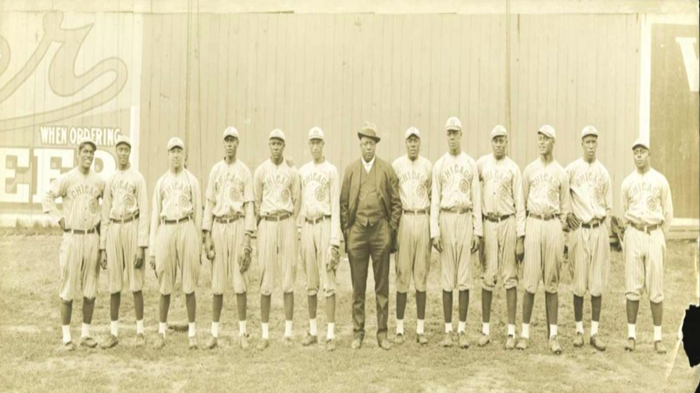"Rube" Foster and Chicago's American Giants

Andrew "Rube" Foster, who had been a great pitcher, and then an astute manager for the Chicago American Giants, saw possibilities as more Black people moved north in the Great Migration to work in factories. He reached a handshake agreement with the son-in-law of the man who owned the Chicago White Sox to play in their old Southside ballpark. The park was enormous.
Rube Foster schooled his teams in the disciplined skills that thrill so many baseball fans: sharp pitching, fleet defense, bunts and stolen bases. The American Giants often drew more fans than the White Sox.
In 1920, Rube Foster brought together the owners of six other African American clubs to begin the Negro National League. There were white men and women who owned teams with Black players. But Rube Foster insisted on Black ownership in his league. He was a businessman, to be sure, who took a cut of the gate receipts from every club, but often reached into his own wallet to help teams.
The Negro National League expanded and inspired other leagues. For the next 25 years, hundreds of Black athletes made careers in Negro League baseball, enthralling crowds and crossing the country in private Pullman cars, even as they were not permitted in many hotels and restaurants of the cities where they played. Jackie Robinson was on the Kansas City Monarchs when the Brooklyn Dodgers called.
Rube Foster didn't live to see the integration of baseball, and the end of the Negro Leagues. He died in 1930 — in an asylum — at the age of 51. On this day to celebrate American independence, Rube Foster and his teammates in the history of the Negro Leagues can be honored for their independence and ingenuity. They outplayed segregation, to create something extraordinary and beautiful.
Jesus Creed is a part of CT's
Blog Forum. Support the work of CT.
Subscribe and get one year free.
The views of the blogger do not necessarily reflect those of Christianity Today.


















